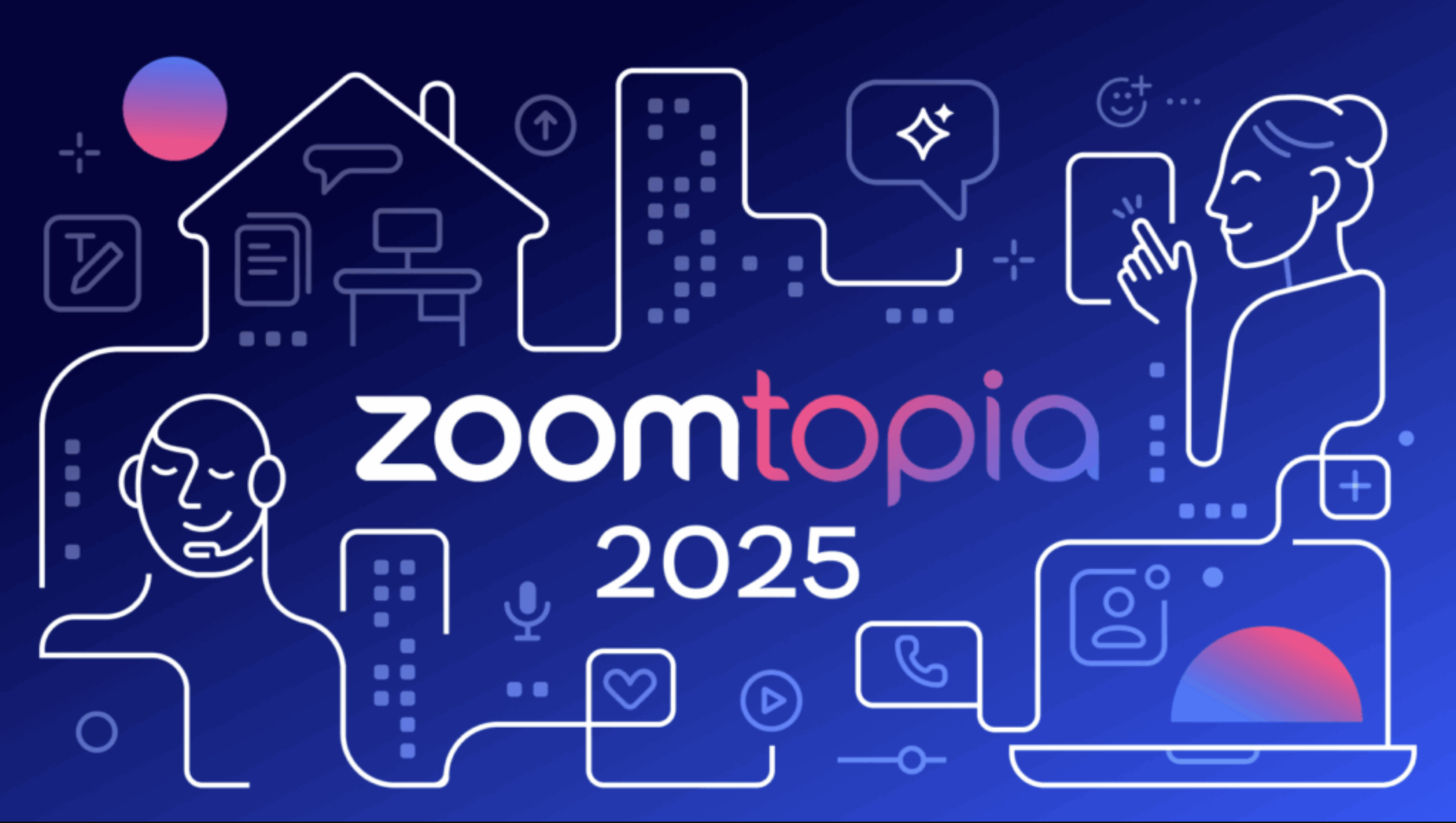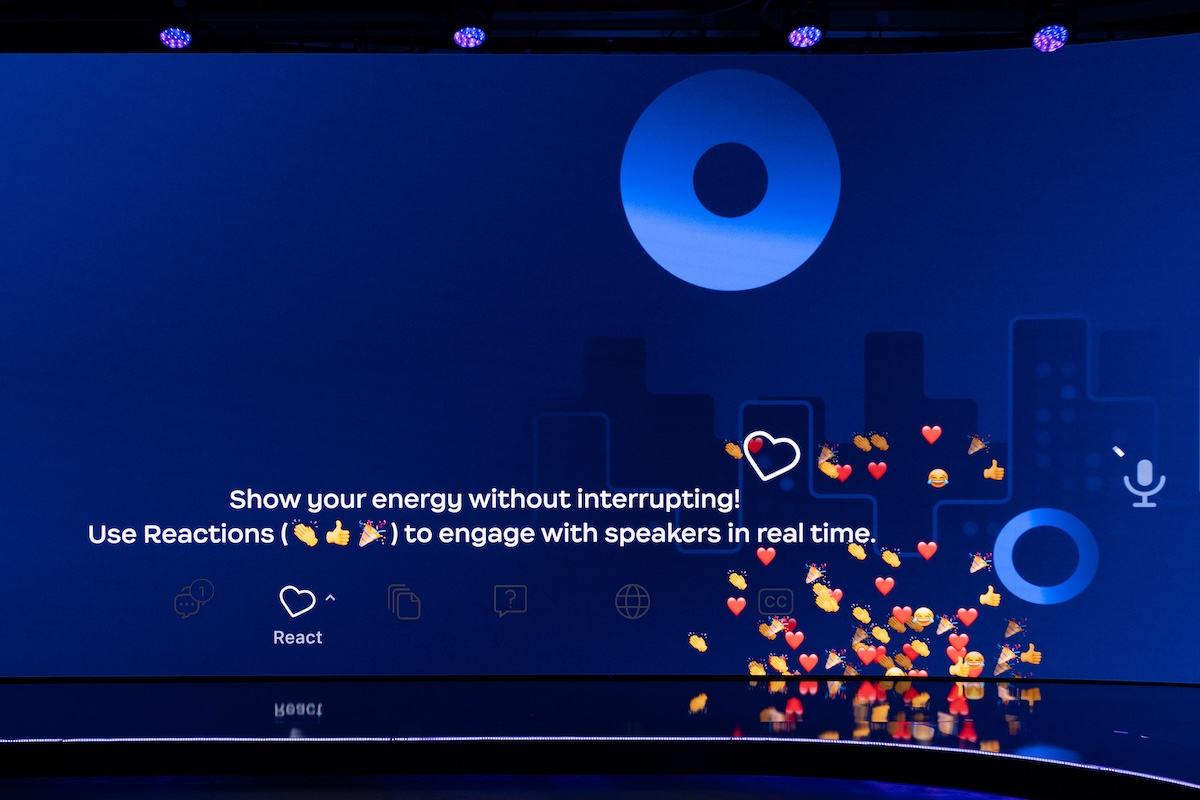
Zoomtopia 2025: Highlights from our biggest event of the year
See what you might have missed in these five takeaways that will have you reimagining the future of work.
If you’re struggling to build connections with virtual and hybrid audiences, here are some tips to create meaningful experiences in a virtual environment.
Updated on September 29, 2025
Published on September 29, 2025


While in-person events are certainly back, you may be surprised to know that last year alone, more than 6 million webinars and virtual events were hosted on Zoom, attracting 268 million attendees. This signifies that virtual events aren’t going anywhere. But if you’re still struggling to build connections with virtual and hybrid audiences, here are some tips to create a meaningful experience in a virtual environment.
At Zoomtopia 2025, our annual customer event, we hosted several (virtual) conversations around the renaissance of experiential marketing. Virtual and in-person events continue to drive high ROI among marketing tactics, and because of this, the bar for excellence has grown. Audiences expect more engagement, better production quality, and smoother experiences — even in virtual environments.
To address this challenge, we turned to Dee Hall, vice president of marketing at Zayo Group, and Latané Conant, chief market officer at 6sense. They shared their advice for creating an engaged community and building a memorable experience for both internal and external audiences. Watch a quick recap below and keep reading for more tips.
One of the biggest challenges with virtual and hybrid events is creating an experience where remote attendees feel like participants, not spectators. Bringing people into the conversation has to feel organic.
At 6sense, Latané’s team hosts an event twice per week (one on each coast) for an active community of 4,000-plus chief marketing officers (CMOs). She uses Zoom Meetings so participants can interact, share experiences, and ask questions without the layer of formality a webinar can bring. With hundreds of attendees per week, she crowdsources topics and has conversation prompts ready to make sure the discussion will be informative and interesting for everyone.
We want to take down barriers to sharing, so we typically don’t have a ton of slides or content. It really is about experiences. … This is the place to share the real real, because being a CMO is hard, and so we want it to feel like everyone is on. Everyone’s got a square. Everyone’s got a place here.
Meanwhile, Dee has found success in using interactive tools such as breakout rooms to mimic a hallway conversation, or the polls feature in Zoom Events to gather immediate feedback during an event. That way, people are more likely to feel like they’re contributing to the content, not just being presented to. Zoom Events helps her team do just that: give hybrid audiences the same experience — regardless if they’re virtual or in-person.
“The idea is that you want to make sure you’re engaging the participants and using their feedback so that they feel like they are part of the story that’s being developed, created, and told at that time,” Dee said.

For some groups, enabling the chat feature during a virtual event can be distracting to participants if it takes away their focus on the content being delivered. But ultimately, for Zayo Group’s hybrid sales kickoff, the chat function in Zoom Events kept the audience engaged and helped build rapport between 800 in-person and remote attendees.
“Keeping our chat feature on was so refreshing because all the people who are joining in the room, as well as virtually, will shout out that they’re from Boston, Chicago, or LA,” Dee said. “That builds camaraderie right out of the gate and starts the engagement immediately when the meeting starts.”
Similarly, the in-meeting chat in Zoom Meetings provides a place for Latané’s CMO community to bond and communicate. People can feel comfortable participating without the added pressure of having to be visible on camera.
“The chat is really fire for us. It’s a big part of how we engage. There’s what’s happening on video but also what’s happening in chat,” Latané said. “Not everyone wants to be on camera and talk, so the chat provides an opportunity to engage and come out of their shell.”
Knowing your audience is key to creating an authentic experience. And because CMOs are busy people who often multitask, Latané recommends creating an environment where participants can “join the conversation from their Peloton, while walking their dog, or even dropping kids off at school” (although she advises safety first if doing the latter).
She uses Zoom Meetings because it’s familiar to her audience and doesn’t require a huge learning curve for people to participate. Instead, they can use the space for relaxed conversation and community building.
We encourage you to ‘show up as you are’ to help make the conversations more organic and ultimately easier to relax and connect.
While AI provides myriad benefits to virtual audiences — from meeting summaries to conversation recaps — it can also make participants hesitant to open up if they feel like they’re being recorded. Zoom AI Companion lets hosts decide when to enable the feature or turn it off so they can create an environment best suited for their audience.
Latané’s events encourage CMOs to be open with their challenges, so they disable recording and AI Companion to provide a more intimate, comfortable setting for sharing. “It’s a big part of what helps us create and keep an authentic experience that is so important to us,” she said.
For Dee, enabling AI Companion helps elevate the experience to extend the shelf life of their event. “AI helps us actually level up the experience. It doesn’t end when the cameras are turned off,” she said. “Having people see the meeting notes right away or have access to a personalized action plan based on the content that they reviewed is a game-changer.”
We love the fact that AI is being integrated, and we can use that to continue the experience even after the event for us. It’s another interesting way that we can use the technology to keep the momentum going and keep the experience more impactful.
Small gestures can still have a big impact if you’re trying to build a community within a virtual setting. Dee and Latané both swear by swag — and it doesn’t have to be a big-ticket item. From snacks to beanies, it’s all about saying thanks and making people feel like they’re a part of something. To drum up more excitement, you could even coordinate a virtual unboxing where everyone opens their package together on camera.
Rituals can also give your community a special connection and leave them wanting to come back for more. These rituals might take different forms, depending on your brand and event — at Zayo Group, each presenter has a “walkout song,” and for Latané’s CMO community, they’ve created a shared experience of having a cup of coffee together.
“We always kick [our call] off with your first sip of coffee on Friday morning, and everyone gets a mug that says CMO Coffee Talk, First Sip Club," Latané said. "Then at the end, we always cover silver linings. That’s a nice way to bookend the program. People know what they’re getting into, which I think feels more authentic and encouraging of sharing,” she said.
Want more insights? Check out our Zoomtopia 2025 marketing and events breakout sessions to see how you can build a community, boost customer interest, and empower sales teams through events. These critical moments can help your teams create lasting connections that contribute to pipeline and growth, and we’ll show you how to make them count.